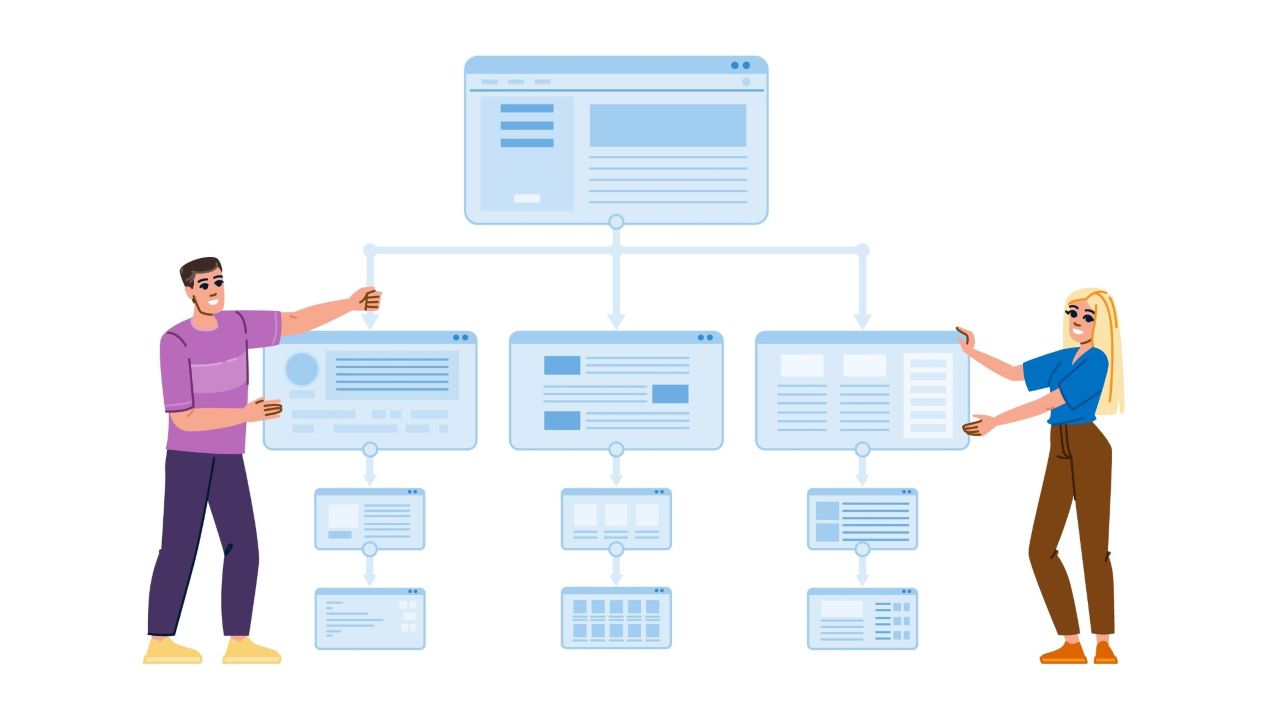
A topic cluster (also known as a content cluster) is like a family of related web pages on a website. Here is how it is divided:
Pillar page: Imagine the pillar page as the “parent” of the cluster. It is the main page that gives a big-picture view of a specific topic. For example, if the topic is “Copywriting Essentials,” the pillar page would cover the essentials.
Subpages (Cluster Pages): These are like the “children” of the cluster. Each subpage dives deeper into a specific aspect related to the main topic. So, you might have subpages about “Grammar Rules,” “Technical vs. Non-Technical Writing,” and “Essence of a Style Guide.”
Internal Links: Think of these as secret passages within your website. They connect the pillar page to the subpages, just like we have hyperlinked above. When you click on a link, it takes you from one page to another within the same website.
What are the Benefits of Topic Clusters for SEO?A well-executed topic cluster approach not only enhances your search engine optimization (SEO) efforts but also provides a better user experience by offering comprehensive information on related subjects.
By publishing high-quality content on a relevant topic, you increase the number of keywords (search queries) your website can rank for, helping you receive more traffic to your site. Imagine having a pillar page dedicated to “Apartment Decoration.” Around this central topic, you create cluster pages that delve into specific aspects like “Kitchen Decor,” “Living Room Furniture,” and “Bedding.” Consistently delivering valuable content across these pages signals to search engines that your website is an authority on apartment decoration.
Google gives importance to content that demonstrates experience, expertise, authoritativeness, and trustworthiness (E-E-A-T). By strategically arranging topic clusters, you align with Google’s E-E-A-T criteria and broaden your chances of ranking higher in search results. By creating content in topic clusters not only improves your ranking but also helps you engage with your audience and build credibility among your potential customers.
How To Create Topic Clusters?You should start by selecting a core topic, like a base on which you could build your content cluster. You need to decide on which topics align with your brand and you are well-versed in. This will help to reach a relevant audience and your experience in the subject matter will show authority in that domain. Ensure that you chose a broad topic to include several sub-topics, yet not so broad that you lose focus and clutter the cluster.
While you circle down on topics, you also need to research for relevant search terms aka keywords. Keywords work as the foundation for SEO-friendly content. Keywords are the search terms seeded by your potential audience on various search engines. For example, our business provides editorial and design services, so we will look for search terms related to our business. You can search for keywords on any freely available or paid online tools. After entering your business domain-related term you will get various keywords. Select only the ones that are relevant and broad-enough to create content pillars and subpages. Also, ensure to check the average number of monthly searches for your target keyword, more volume indicated more potential reach of your content each month. Another key factor to look at is the keyword difficulty. It is a score indicating how difficult it will be to rank in Google’s top 10 organic results for a given term. The higher the number out of 100, the more difficult it is to rank on top. Now ones you get the best keywords, start ideating for your pillar pages and subpages. Suppose you chose “content outsourcing” as your keyword for a pillar page, your pillar page could be “An overview to Outsourcing in the Content Industry” and your subpage topics could be “Five Benefits of Outsourcing Content Creation for Consulting Firms” or if your keyword is “PPT design” your pillar page could be “Principles of Effective PPT Design” and subpage topics could be “Design Principles: Contrast, Alignment, Repetition, Proximity”; “Color Theory in PPT Design”; and “Typography Tips for PPTs.”
Once you have your topics and keywords ready, begin by writing content for your pillar pages. These pages are broad and serve as the foundation for your topic cluster. Next, use the content from your pillar pages to create cluster pages, which will help you link your pillar page content to your cluster pages effectively.
For example, if you run a shoe company and want to publish a “Shoe Buying Guide” as a pillar page, you might identify subpages such as “Budget-Friendly Shoes,” “What Are Running Shoes,” and “5 Things to Keep in Mind Before Buying a Pair of Shoes.” Feel free to contact us for a pilot project, where we can assist you in building keywords and content for your brand.
The work does not end here. You need to monitor the performance of your content clusters to understand what is working and what needs improvement. You can include more top-performing clusters with additional content, review and enhance low-performing content, and enhance your topic cluster strategy based on the analysis.
Writing SEO-friendly content requires extensive research, from selecting the right keywords to populating your content calendar with pillar page and subpage ideas. We can help you with this, potentially saving you hours that could be better spent focusing on your core business. Even if you do not intend to use our services in the long term, feel free to contact us and take advantage of a pilot project that we are happy to undertake for you at no charge.
Superlative responsiveness and creativity. The professionals with whom we have worked have been significantly responsive.